How Boeing 737 MAX's flawed flight control system led to 2 crashes that killed 346
Watch the full story on "20/20"
Samya Stumo arrived at Bole International Airport in Addis Ababa, Ethiopia, on the morning of March 10, 2019, after a long flight from Washington, D.C.
The 24-year-old, who had been raised on a Massachusetts farm, was on her first overseas assignment for the global health care group, Thinkwell. After a two-hour layover, Stumo was scheduled to move on to Nairobi, Kenya, on Ethiopian Airlines Flight 302.
Along with her were 148 other passengers from 35 different countries. Many were on missions of goodwill. Some were heading to Nairobi for a United Nations conference, according to Ethiopian journalist Hadra Ahmed. Others, she said, “were going to volunteer and do good for the world.”
Just six minutes after takeoff, ETH302 dove at full speed into a field 30 miles away from Bole International, near the town of Bishoftu. Everyone on board, including Stumo, was dead.
“On the BBC at 3:00 in the morning, it said that a plane, Ethiopian Airlines taking off from Addis Ababa, had crashed,” said Stumo’s mother Nadia Milleron. “I remember I couldn’t breathe.”
Milleron said some of her daughter’s personal belongings were recovered and returned to the family, including Stumo’s work journal, passport and articles of clothing.
“It all smells of jet fuel. They fill the room with the smell,” Milleron said. “To me, it’s the smell of death.”
The plane that crashed on that clear, sunny morning in Ethiopia was a Boeing 737 MAX 8, a new model that had become the fastest-selling plane in Boeing's history. The 737 MAX was a revamped version of Boeing’s highly popular 737 aircraft, with added power and fuel-efficient engines.
Boeing touted the MAX as being so similar to the previous model of the 737 that it said pilots wouldn’t be required to undergo any training for it in a flight simulator -- a costly expense for airlines. Instead, Boeing said pilots could get up to speed on the new model by reviewing a 56-minute online course.
“It went through a robotic voice describing what the MAX is about,” said Capt. Dennis Tajer, an American Airlines pilot and spokesperson for the Allied Pilots Association. “You can sit at Starbucks [or] sit at home, and it would ask you a couple of questions to affirm the learning.”
The Lion Air disaster
Indonesia-based budget airline Lion Air was one of Boeing’s biggest buyers, ordering over 200 Boeing 737 MAX 8s at a cost of $22 billion. And after its first flight in May 2017, the 737 MAX 8 went 17 months without incident. Then, on Oct. 28, 2018, Lion Air Flight 610 from Bali to Jakarta experienced an in-flight emergency as the plane suddenly began to nosedive after take-off.
“All of us were screaming like we are in a roller coaster,” said Rakhmat Robbi, a passenger on the flight. “To be honest, I [was] think[ing] it’s almost like my last flight and this is my last day.”
The aircraft nosedived four times as the pilots struggled to regain control, according to Indonesia’s National Transportation Safety Committee (NTSC). A third pilot who just happened to be in the cockpit was able to help the two pilots resolve the situation and the plane landed safely in Jakarta. However, according to the NTSC, the crew left incomplete notes about the details of the emergency.
“The pilot reported that he had a problem with the speed and altitude indicated on [the] captain’s side,” said Capt. Nurcahyo Utomo, senior safety investigator of the NTSC.
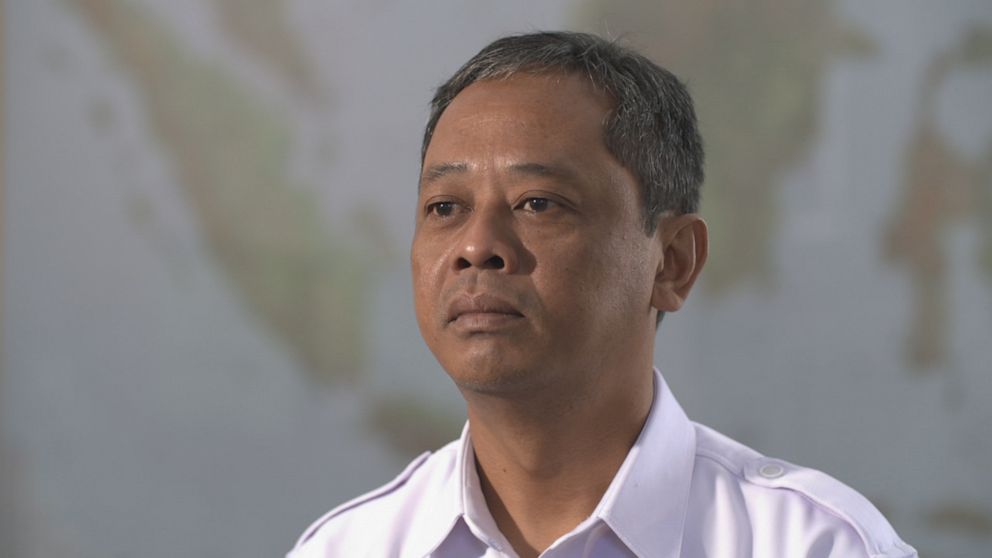
Nurcahyo said the captain failed to mention the plane’s trim system had suddenly activated, causing it to repeatedly nose dive.
“The pilots were able to control it," said aviation attorney Steven Marks. “They knew they had a problem. But they didn’t understand exactly what the nature of the problem was.”
Early the next morning, on Oct. 29, 2018, the same plane departed from Jakarta to Pangkal Pinang, Indonesia. Just 13 minutes after takeoff, Lion Air Flight 610 plummeted into the Java Sea.
Authorities launched a search and rescue mission immediately, but all 189 people on board died.
David Moreno, 12, whose mother Fiona Ayu Zen was on the flight, said “I prayed so she would be found... I prayed for her safety, but she didn’t make it.”
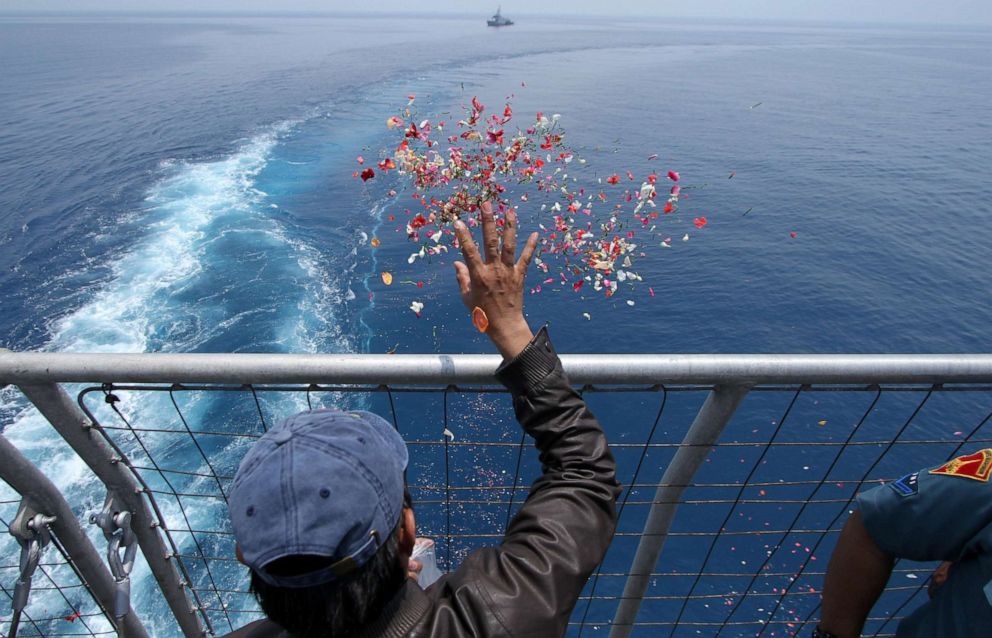
The 737 MAX’s flawed flight control software
The flight data recorder from Lion Air 610 revealed that the plane had gone out of control -- it had moved up and down over 24 times before it finally dove into the sea at full speed.
“I never knew … any case of the [sic] aircraft that fly down and up and up and down like this,” Nurcahyo said. “I knew that the pilot was fighting with the plane.”
Nurcahyo said the NTSC asked Boeing about the kind of system on the 737 MAX that could have caused it to behave in such a manner. He said investigators were surprised to learn that Boeing had installed a flight control software program that could force the plane into a dive without the pilots’ knowledge.
The software, called Maneuvering Characteristics Augmentation System (MCAS), was added to compensate for the larger, more powerful engines that had been added onto the existing 737 airframes, which changed the in-air flight characteristics of the aircraft.
“The aircraft starts to want to pitch up all by itself,” said Peter Lemme, a former Boeing engineer, who didn’t work on the MAX design, and now serves as chief consultant for Seamless Air Alliance. “The idea was to provide something that would offset that pitching moment, or causing the nose to come back up.”
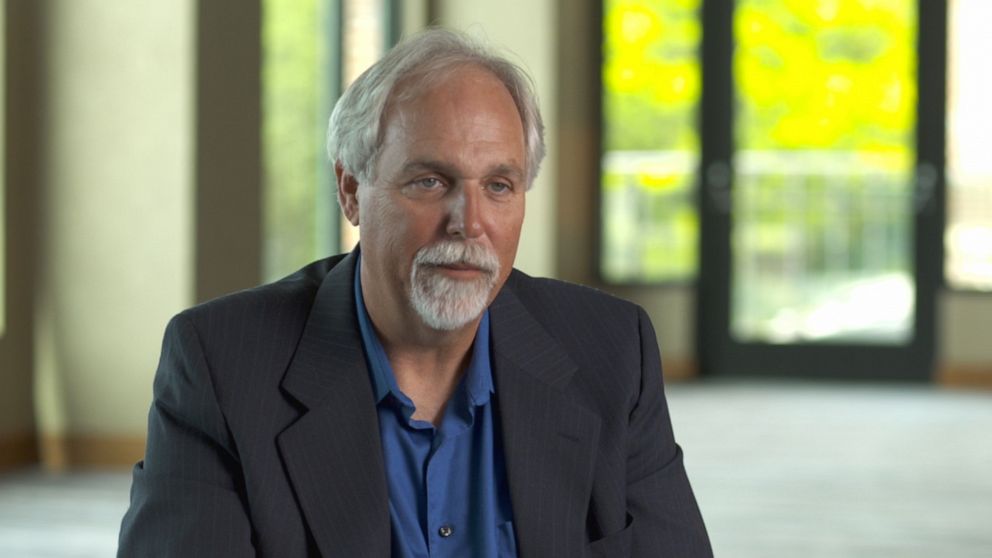
When the aircraft’s computer sensed that the plane was in danger of a stall, MCAS worked by triggering the horizontal stabilizer located on the aircraft’s tail to push the nose back down.
MCAS was accidentally triggered on both Lion Air flights because a defective angle of attack (AOA) sensor had transmitted incorrect information about the position of the plane’s nose. Although there are two AOA sensors on the 737 MAX, MCAS was only connected to one of them.
“It’s a lack of redundancy that appears to me to be unacceptable in airplane design,” said aviation journalist Christine Negroni, author of the book “The Crash Detectives.”
Boeing responds
In the wake of the Lion Air tragedy, then Boeing CEO Dennis Muilenburg reassured the flying public about the safety of the 737 MAX 8.
“The bottom line here is the 737 MAX is safe and safety is a core value for us at Boeing,” Muilenburg said in a Nov. 13, 2018, appearance on Fox Business.
Boeing followed up by issuing a bulletin to airlines instructing pilots to cut off power to the horizontal stabilizer in the event of an uncommanded nose-down emergency, which would also prevent MCAS from activating.
Boeing also noted in a statement that the pilots on the Lion Air flight from Bali to Jakarta were able to successfully land because they had correctly followed this procedure. The pilots on the fatal Lion Air flight failed to take this step.
In a private meeting with the pilots' union of American Airlines that was secretly recorded by the union’s president, Boeing said it had decided not to reveal the existence of MCAS in the 737 MAX flight manual on the grounds that it didn’t want to inundate pilots with unnecessary information.
“That enraged us,” Capt. Tajer said. “Boeing always gives you the information, they don’t parcel it out.”
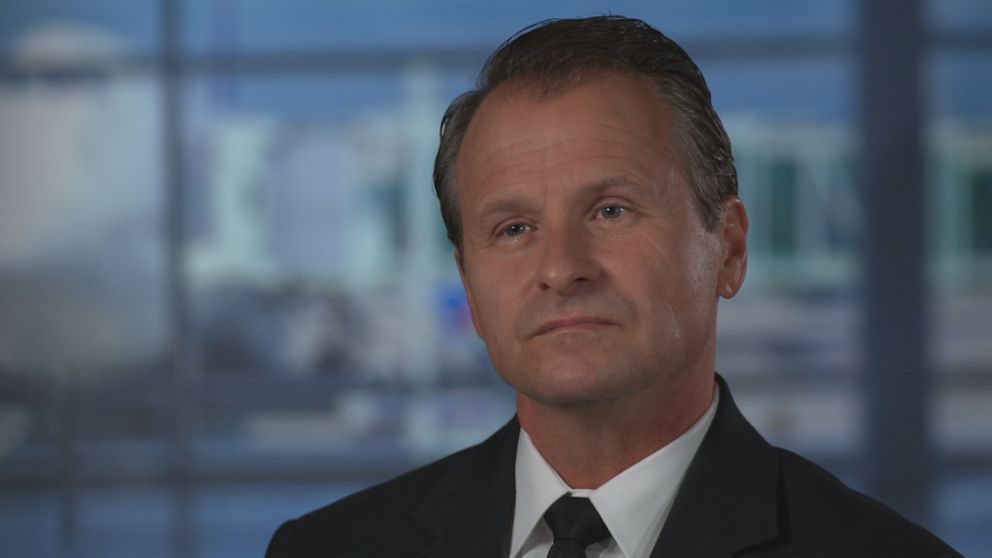
“Boeing told pilots that they also didn’t feel the need to inform us because if [the] MCAS mis-fired, it would look like an emergency called Runaway Stab Trim, and that we could respond in time,” he added. “However, they failed to recognize the multitude of erroneous alerts that would be distracting pilots while the Stab Trim ran away at an extraordinary speed.”
Boeing assured the pilots union that software fixes were in the works for MCAS, even as the aircraft continued to fly around the world.
The aftermath of the Ethiopian crash
Ethiopian Airlines Flight 302 crashed just four months after the Lion Air flight went down, and in its wake, Boeing faced renewed and intense scrutiny about the aircraft and their MCAS system.
An analysis of the ET302 flight data recorder revealed that once again, a defective AOA sensor had accidentally triggered MCAS and sent the plane into a nosedive.
“What was heard on the cockpit voice recorder, the first officer saying, ‘Pitch up! Pitch up! Pitch up!’ while the MCAS was kicking and nosediving the aircraft,” said Ethiopian aviation journalist Kayeyesus Bekele. “But it was so difficult for them to keep the aircraft under control, so finally, it nosedived near Bishoftu town.”
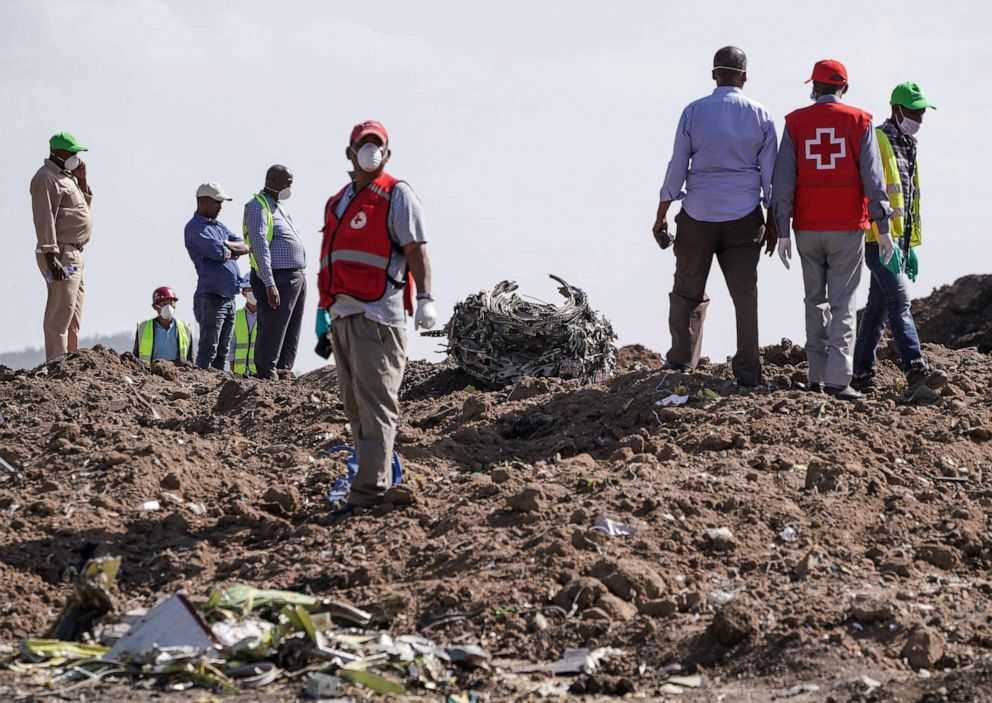
But there was one key difference between the doomed Lion Air and Ethiopian Airlines flights: the Ethiopian Airlines pilots had known MCAS existed and they had followed Boeing’s instructions to disable it by turning off the electric trim system that controlled the horizontal stabilizer.
After the Ethiopian Airlines pilots were unable to control the plane manually, they turned the electric trim back on, which reactivated MCAS.
“The crew performed all the procedures repeatedly provided by the manufacturer, but was not able to control the aircraft,” said Dagamawit Moges, Ethiopia’s minister of transport, in a press conference on April 4, 2019.
While countries continued to allow the 737 MAX planes to fly after the Lion Air crash, that changed after the Ethiopian crash, and countries around the world grounded all 737 MAX flights. The United States was one of the last countries to prohibit the aircraft from flying.
During a press conference in Chicago, Muilenburg expressed sorrow for the loss of life in the two crashes, but he again defended the safety of the 737 MAX and said it was incorrect to solely blame MCAS for the crashes.
“There is no single item; it’s a chain of events,” Muilenburg told reporters. “We’ve designed the MAX to have the flying qualities desired in the hands of the pilots. The MCAS system is part of that design effort.”
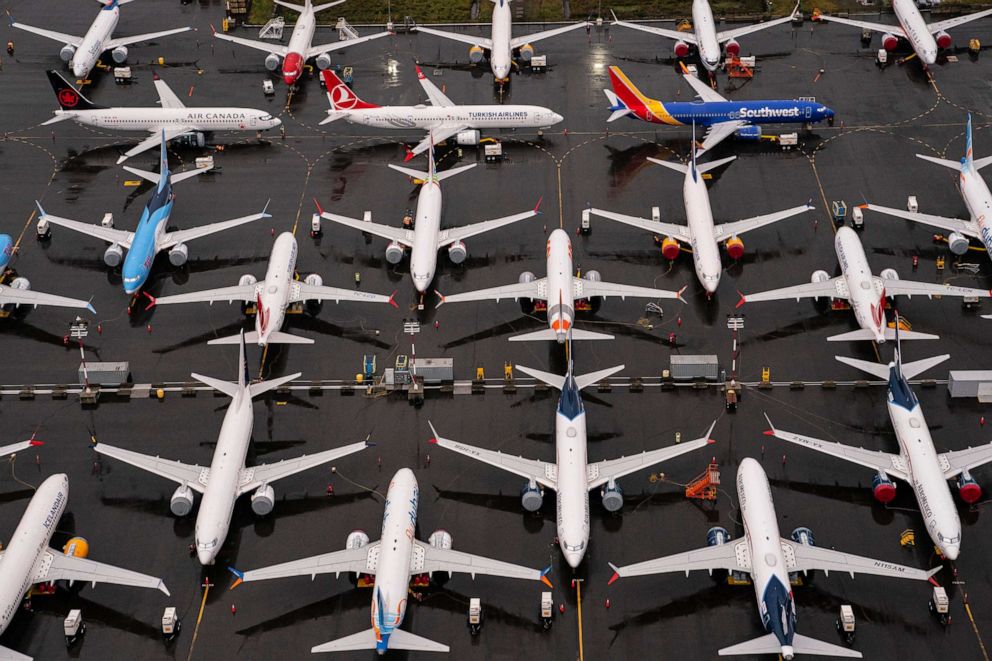
A crusade against Boeing
The families of the Ethiopian Airlines crash victims were furious with Boeing’s response.
“He’s sorry that we lost our family members,” said Nadia Milleron. “He doesn’t take any accountability for causing their deaths.”

Milleron, her husband Michael Stumo and other victims’ family members launched an effort to hold Boeing accountable for the accidents.
“What really shocks me is their greed, how they have the audacity to do what they’re doing,” said 15-year-old Amen Tamirat, whose father, Tamirat Mulu, died in the Ethiopian crash. “I don’t know how they can still sleep at night.”
Over 100 victims’ families filed a lawsuit against Boeing, alleging that the 737 MAX had a defective design and that Boeing issued an inadequate warning about the aircraft. Boeing has denied the allegations.
“This is going to go down as one of the most callous, deliberate efforts to keep a product in the public domain for the wrong reasons,” said Robert Clifford, of Clifford Law Offices, who is one of the attorneys suing Boeing.
The families also launched a second front in Washington, D.C., fighting to be part of a congressional investigation into the 737 MAX scandal.
Samya Stumo’s parents were uniquely equipped to help lead this effort. Her father had worked as a lobbyist on behalf of small farms, and her mother was the niece of legendary consumer advocate and former presidential candidate Ralph Nader.
Nader, who led the fight to improve automotive safety starting in the 1960’s with a focus on the Chevrolet Corvair, was instrumental in advising the couple.
“My uncle helped us frame questions. [He] said to us practical things, like, ‘Never settle for staff, always go to the top,’” said Milleron.
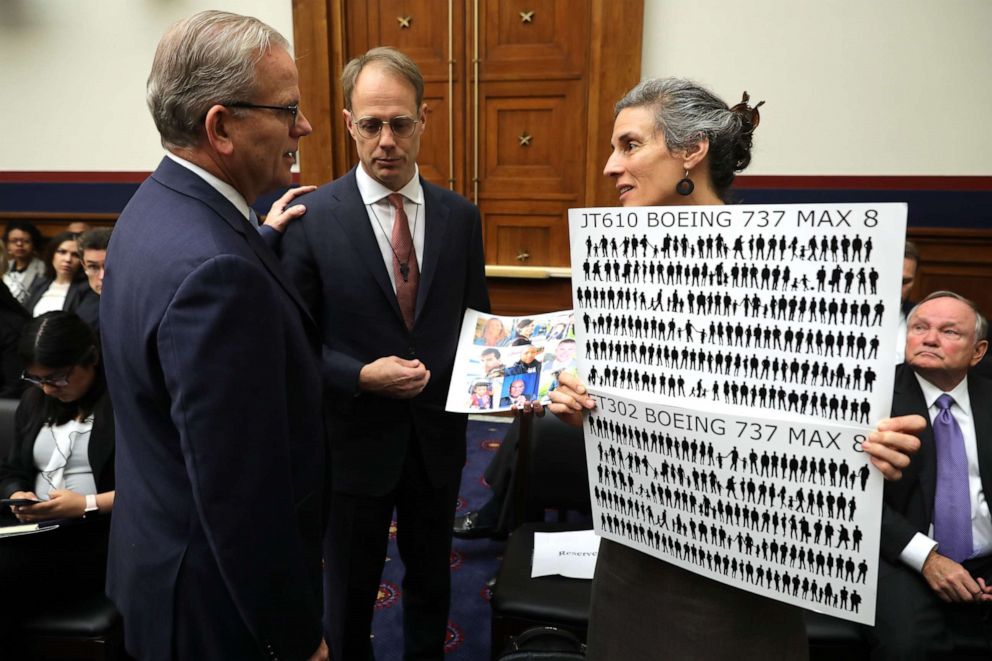
The House Committee on Transportation and Infrastructure launched an 18-month-long investigation into Boeing’s development of the 737 MAX. Committee Chair Rep. Peter DeFazio, D-Oregon, told ABC News the investigation was to “find out what the defects of the plane were and how the regulatory system failed us in allowing those defects to go forward in the manufacturing of the plane.”
During his testimony before the House Committee on Oct. 30, 2019, Muilenburg again apologized to the victims’ families, who crowded the hearing room holding up signs with images of their loved ones.
“We are deeply, deeply sorry, and we will never forget,” Muilenburg testified.
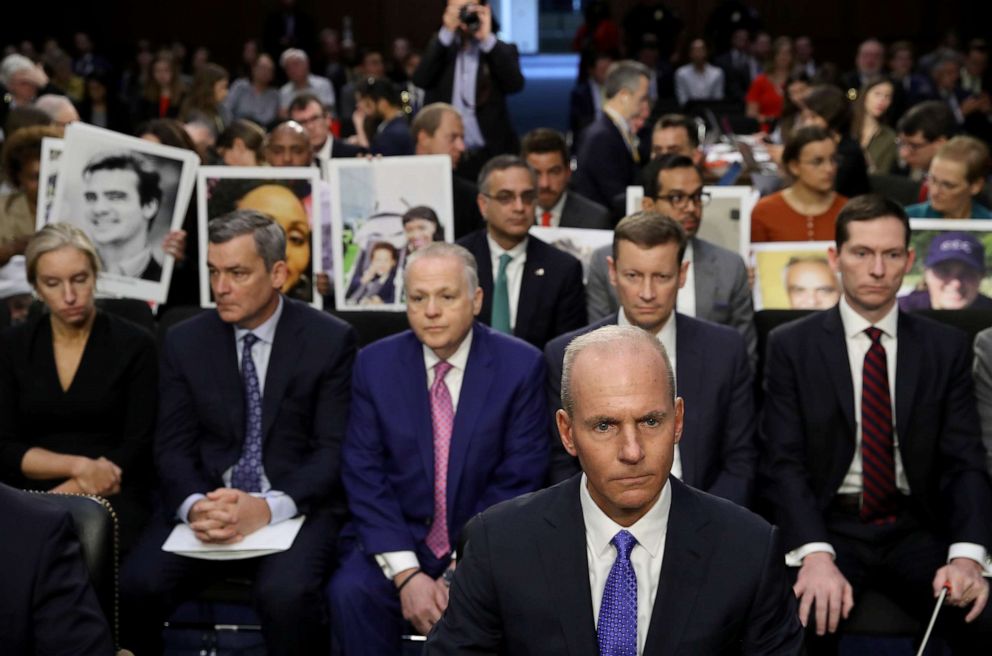
When Defazio asked him who bore responsibility for the two plane crashes, Muilenburg responded: “Mr. Chairman, my company and I are responsible. We are responsible for our airplanes, and we know there are things we need to improve.”
Less than two months after the hearing, Muilenburg resigned as CEO of Boeing and was replaced by David Calhoun, who had served on Boeing’s board of directors.
In its final report, released Sept. 16, 2020, the House investigation concluded that Boeing had placed the safety of the flying public in jeopardy for competitive reasons.
The investigation uncovered internal Boeing emails that showed some employees had raised concerns about the 737 MAX while it was still in development, and that they had questioned the safety culture of the company as well.
The 737 MAX to fly again
The Federal Aviation Administration announced on Nov. 18, 2020, that it had cleared the 737 MAX to fly again.
Boeing said it added a number of safeguards to the plane, including making MCAS responsive to both AOA sensors, preventing MCAS from firing more than once and requiring pilot simulator training.
In a statement to "20/20," Boeing said it had "cooperated fully with government and regulatory reviews and also have made a series of meaningful changes to strengthen our company’s safety practices and culture.”
"On November 18, 2020, the FAA lifted the order that suspended operation of 737-8s and 737-9s. The agency’s action validated that with the approved software update, additional pilot training and other defined steps, the newest member of the 737 family is safe and ready to fly," Boeing's statement continued. "We have full confidence in its safety."
The company’s full statement to “20/20” appears at the end of this article.
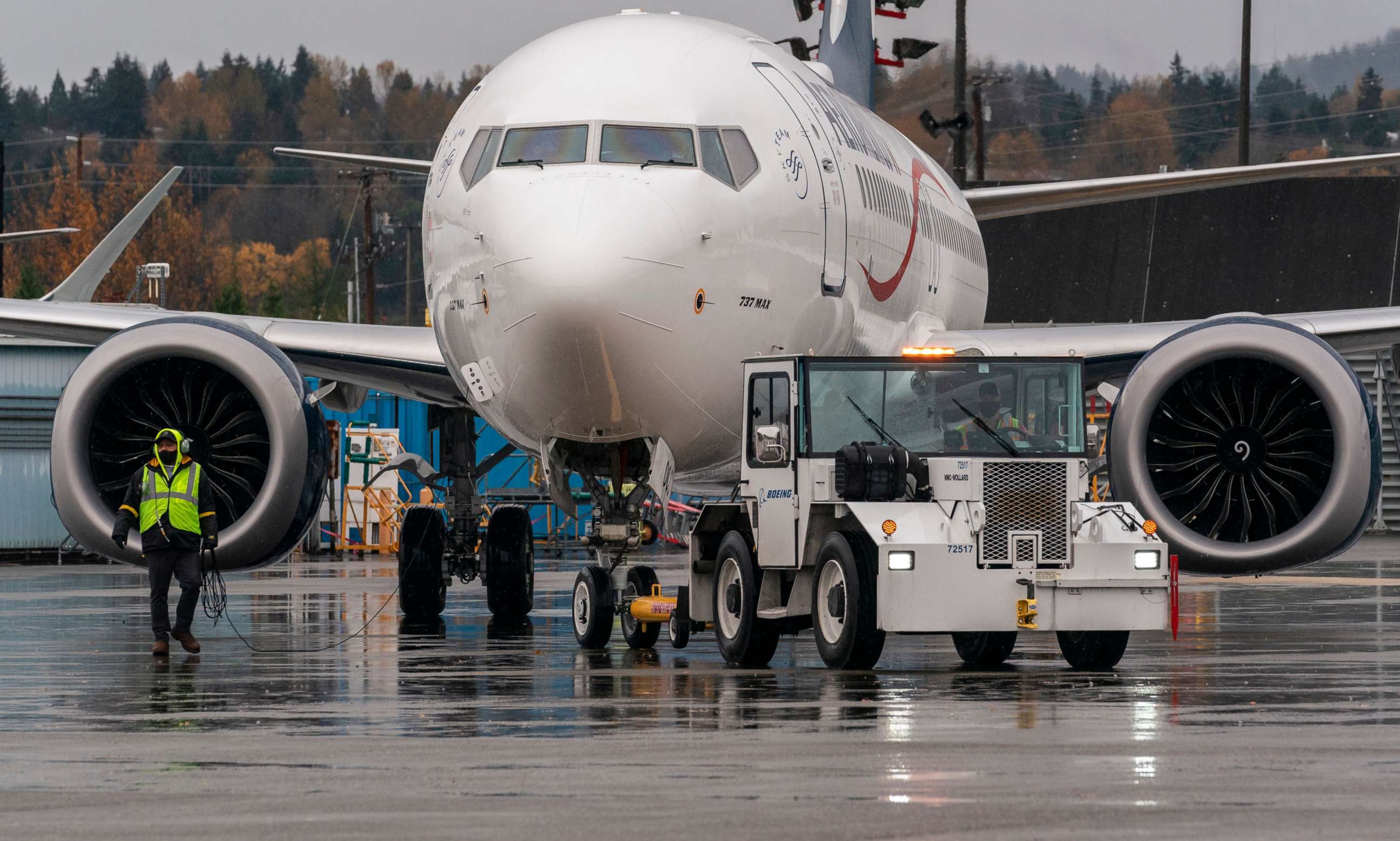
On its website, American Airlines listed the first flight of the re-certified 737 MAX, which will go from Miami to New York City on Dec. 29.
Some aviation experts believe the aircraft is now safe to fly with the modifications Boeing says it has implemented.
“I do think the 737 is a safe plane. I'm happy to fly on the 737. I have no issue about that,” Lemme said. “This MCAS thing was bad, and I think that trust, it's going to be really hard to get back at this point.”
Meanwhile, the families of the victims are outraged that the 737 MAX will fly again.
“Neither of us would ever get on a 737 MAX,” said Milleron, speaking for herself and her husband. “We will warn every single person we know to look at the equipment that they are flying on and make sure that they don't fly on a 737 MAX.”
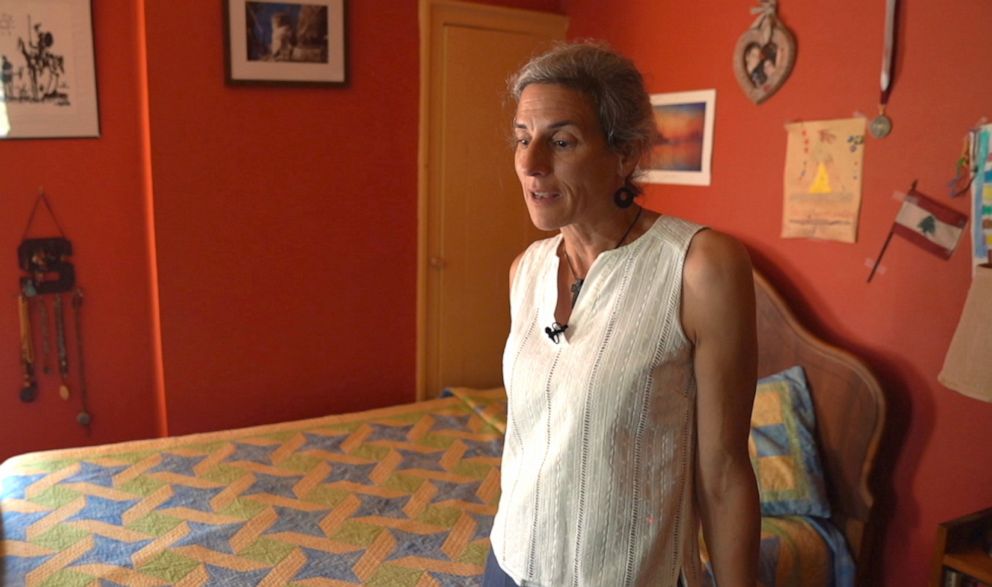
Boeing's statement to ABC News “20/20”:
Safety is and always has been Boeing’s top priority. We will never forget the 346 victims of the Lion Air Flight 610 and Ethiopian Airlines Flight 302 accidents, as well as their families. We will honor them by holding close the hard lessons learned from this chapter in our history.
Working closely with the Federal Aviation Administration (FAA), global regulators and other stakeholders, Boeing has implemented changes that ensure accidents like these will never happen again. We have cooperated fully with government and regulatory reviews and also have made a series of meaningful changes to strengthen our company’s safety practices and culture.
On November 18, 2020, the FAA lifted the order that suspended operation of 737-8s and 737-9s. The agency’s action validated that with the approved software update, additional pilot training and other defined steps, the newest member of the 737 family is safe and ready to fly. FAA Administrator Steve Dickson has described the 737 MAX as “the most heavily scrutinized transport aircraft in history.” We have full confidence in its safety.
Safety is fundamental to the success of our industry, and every accident and near-miss provides an opportunity to further improve safety for the flying public. Over the past 50 years, this journey of continuous improvement has made commercial aviation the world’s safest form of transportation.
Boeing is committed to restore trust, and we’ll do it one airplane at a time.




